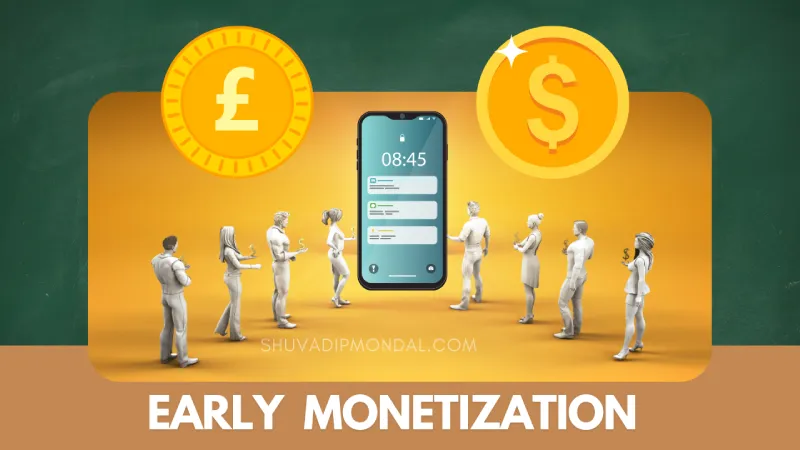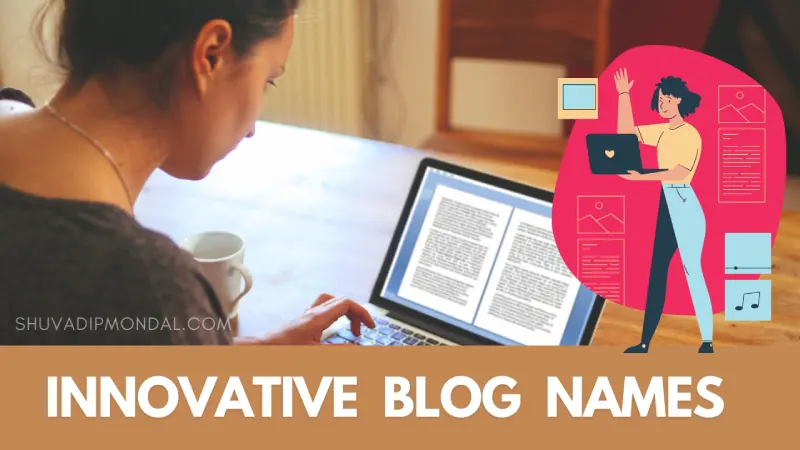Whether you’re dreaming of becoming the next fashion influencer or simply want to document your personal style journey, starting a fashion blog can be a rewarding endeavor.
This comprehensive guide will walk you through every step of creating a successful fashion blog, from defining your niche to monetizing your content.

Why It’s Important to Find Your Angle
Fashion blogging is a saturated field with countless bloggers vying for attention. To stand out, it’s crucial to identify a specific niche that aligns with your interests and expertise.
A well-defined niche not only attracts a dedicated audience but also makes your blog more appealing to brands and advertisers.
Identifying Your Fashion Passion
Start by reflecting on what aspects of fashion excite you the most.
Do you have a keen interest in sustainable fashion, high-end luxury brands, street style, vintage clothing, or perhaps fashion for specific body types?
Your passion will drive your content and keep you motivated in the long run.
Examples of Fashion Niches:
- Sustainable Fashion: Focuses on eco-friendly brands, ethical manufacturing processes, and sustainable styling tips.
- Street Style: Showcases urban fashion trends, streetwear brands, and city-specific styles.
- Luxury Fashion: Highlights high-end brands, designer collaborations, and luxury fashion events.
- Vintage Fashion: Explores retro styles, vintage shopping tips, and historical fashion trends.
- Plus-Size Fashion: Concentrates on stylish outfits for plus-size individuals, body positivity, and inclusive brands.
Researching Market Demand
Use tools like Google Trends, Keyword Planner, and BuzzSumo to assess the popularity and competition within your chosen niche. Look for gaps in the current content offerings that you can fill with your unique perspective.
Steps to Research Market Demand:
- Keyword Research: Identify relevant keywords and analyze their search volume and competition.
- Competitive Analysis: Examine top blogs in your niche to understand what they’re doing well and where there’s room for improvement.
- Audience Insights: Utilize social media analytics and forums to gauge what your potential audience is interested in.
Tips for Defining Your Voice and Style
Your voice and style are what make your blog uniquely yours. Whether you prefer a casual, conversational tone or a more formal, authoritative approach, consistency is key.
Additionally, your visual style—such as color schemes, typography, and image aesthetics—should reflect your personal brand and appeal to your target audience.
Considerations for Defining Your Voice and Style:
- Personality: Let your personality shine through your writing. Authenticity resonates with readers.
- Visual Consistency: Use a cohesive color palette and consistent image filters to create a recognizable brand identity.
- Content Format: Decide whether you’ll focus on long-form articles, photo-heavy posts, video content, or a mix of various formats.
2. Setting Up Your Blog
Choosing the Right Platform
Selecting the right blogging platform is foundational to your blog’s success. While there are several options available, WordPress.org stands out as the most flexible and widely used platform for fashion bloggers.
Why Choose WordPress.org?
- Flexibility: Offers extensive customization options with thousands of themes and plugins.
- SEO-Friendly: Built-in features and plugins that enhance search engine optimization.
- Ownership: Full control over your website and content, unlike hosted platforms.
Alternative Platforms:
- Squarespace: User-friendly with beautiful templates but less flexible than WordPress.
- Wix: Drag-and-drop builder suitable for beginners but can become limiting as your blog grows.
- Blogger: Free and easy to use but lacks advanced features and customization options.
Selecting a Domain Name and Hosting
Your domain name is your blog’s address on the internet. It should be memorable, relevant to your niche, and easy to spell.
Tips for Choosing a Domain Name:
- Keep It Short and Simple: Avoid long or complicated names.
- Include Keywords: Incorporate relevant keywords if possible, like “fashion,” “style,” or “chic.”
- Brandable: Ensure it’s unique and stands out from competitors.
- Avoid Numbers and Hyphens: These can make the name harder to remember and type.
Recommended Hosting Providers:
- Hostinger: Best for Begginers Cheap
- Chemi Cloud: Best for Performance and service.
- Bigrock: Officially recommended by WordPress, affordable with reliable performance.
- Namecheap: Best WordPress hosting- Offers scalable plans and good uptime.
- WP Engine: Managed WordPress hosting for those seeking premium performance and support.
Designing Your Blog
A visually appealing blog is essential in the fashion niche, where aesthetics play a significant role. Your blog’s design should reflect your personal style and make navigation intuitive for visitors.
Steps to Design Your Blog:
- Choose a Responsive Theme: Ensure your theme looks great on all devices. Popular WordPress themes for fashion blogs include GeneratePress, Astra, and Divi.
- Customize Your Layout: Adjust the layout to highlight your content, whether it’s featuring large images, grid layouts, or minimalistic designs.
- Branding: Create a logo that represents your brand. Use consistent colors and fonts across your blog to maintain a cohesive look.
- Navigation: Organize your menu and categories logically to help visitors find content easily.
Essential Plugins and Tools
Enhance your blog’s functionality with essential plugins and tools that improve SEO, user experience, and site performance.
Must-Have WordPress Plugins:
- Yoast SEO: Optimizes your content for search engines.
- Akismet: Protects your blog from spam comments.
- Jetpack: Offers a suite of tools including site security, performance enhancements, and analytics.
- Smush: Compresses images to improve loading speed.
- Social Warfare: Adds social sharing buttons to your posts.
- Elementor or GenerateBlocks: Helps create custom layouts without coding.
Additional Tools:
- Google Analytics: Tracks your website traffic and user behavior.
- Canva: Design tool for creating graphics, social media posts, and blog visuals.
- Trello or Asana: Project management tools to organize your content calendar and tasks.
- Grammarly: Assists in proofreading and enhancing your writing.
3. Content Creation
Creating high-quality, engaging content is the cornerstone of a successful fashion blog. Your content should provide value to your readers, showcase your expertise, and reflect your unique style.
Planning Your Content Strategy
A well-thought-out content strategy ensures consistency and helps you stay organized.
Steps to Develop Your Content Strategy:
- Brainstorm Post Ideas: Use tools like Answer the Public, BuzzSumo, and Google Keyword Planner to generate topic ideas.
- Determine Posting Frequency: Decide how often you’ll publish new content—weekly, bi-weekly, or monthly. Consistency is more important than frequency.
- Create a Content Calendar: Plan your posts in advance to ensure a balanced mix of content types and topics. Tools like Trello, Asana, or Google Calendar can help manage your schedule.
Writing High-Quality Blog Posts
Your writing should be clear, engaging, and informative. Focus on providing actionable advice and insights that your readers can implement.
Tips for Writing High-Quality Posts:
- Research Thoroughly: Ensure your information is accurate and up-to-date. Cite credible sources when necessary.
- Create Catchy Headlines: A compelling headline grabs attention and encourages clicks. Use numbers, questions, or power words to make them more appealing.
- Structure Your Posts: Use headings, subheadings, bullet points, and short paragraphs to enhance readability.
- Engage Your Audience: Write in a conversational tone, ask questions, and encourage comments to foster engagement.
- Include a Call-to-Action (CTA): Guide your readers on what to do next—subscribe to your newsletter, follow you on social media, or leave a comment.
Incorporating Visuals and Multimedia
Fashion is a visually-driven industry, making high-quality images and multimedia essential for your blog.
Types of Visuals to Include:
- High-Quality Photos: Showcase outfits, accessories, and styling tips with clear, well-lit images.
- Infographics: Present information in an easily digestible format.
- Videos: Share lookbook videos, styling tutorials, or behind-the-scenes footage.
- Interactive Content: Create style quizzes, polls, or interactive lookbooks to engage your audience.
Tips for Visual Content:
- Consistency: Use a consistent filter or editing style for your photos to maintain a cohesive look.
- Optimize Images: Compress images to ensure fast loading times without sacrificing quality.
- Alt Text: Add descriptive alt text to images for better SEO and accessibility.
Fashion Blogging Essentials
To stand out in the fashion niche, incorporate fashion-specific elements that resonate with your audience.
Key Elements to Include:
- Lookbooks: Curate seasonal or themed outfits to inspire your readers.
- Outfit of the Day (OOTD): Share daily outfit inspirations with detailed descriptions.
- Product Reviews: Provide honest reviews of clothing, accessories, and beauty products.
- Styling Tips: Offer advice on how to mix and match pieces, accessorize, and create versatile looks.
- Trend Analysis: Discuss current fashion trends and how to incorporate them into everyday style.
4. Building an Audience
Creating great content is just the beginning. Building and maintaining a loyal audience requires strategic promotion and engagement.
Leveraging Social Media
Social media platforms are invaluable for promoting your blog and connecting with your audience. Each platform has its unique strengths, so it’s essential to tailor your content accordingly.
Best Platforms for Fashion Bloggers:
- Instagram: Ideal for sharing high-quality images, short videos, and stories. Utilize features like IGTV, Reels, and Shopping to engage your audience.
- Pinterest: Great for driving traffic to your blog through visually appealing pins. Create boards that reflect your blog’s content and style.
- TikTok: Perfect for short, creative videos showcasing styling tips, outfit transitions, and fashion challenges.
- Facebook: Useful for building a community through groups, sharing blog posts, and running targeted ads.
- Twitter: Share quick updates, engage in fashion conversations, and network with other bloggers and brands.
Tips for Social Media Success:
- Consistency: Post regularly to stay top-of-mind with your followers.
- Engagement: Respond to comments, like and share user-generated content, and participate in relevant conversations.
- Hashtags: Use relevant hashtags to increase the visibility of your posts.
- Collaborations: Partner with other influencers, brands, or bloggers to reach a wider audience.
Networking with Other Bloggers
Building relationships with other bloggers can open doors to collaborations, guest posting opportunities, and shared audiences.
Ways to Network:
- Join Blogging Communities: Participate in forums, Facebook groups, and online communities dedicated to fashion blogging.
- Attend Events: Go to fashion events, webinars, and conferences to meet like-minded individuals.
- Collaborate on Projects: Work together on joint giveaways, style challenges, or collaborative blog posts.
- Guest Posting: Write guest posts for established blogs in your niche to gain exposure and backlinks.
SEO Best Practices for Fashion Bloggers
Search Engine Optimization (SEO) is crucial for increasing your blog’s visibility on search engines like Google. Implementing effective SEO strategies can drive organic traffic to your site.
Basic SEO Tips:
- Keyword Research: Identify relevant keywords with high search volume and low competition. Use tools like Ahrefs, SEMrush, or Ubersuggest.
- On-Page Optimization: Incorporate your target keywords naturally into your titles, headings, meta descriptions, and throughout your content.
- Quality Content: Focus on creating valuable, informative, and engaging content that answers your audience’s queries.
- Mobile Optimization: Ensure your blog is mobile-friendly, as a significant portion of traffic comes from mobile devices.
- Site Speed: Optimize your website’s loading speed by compressing images, using caching plugins, and minimizing code.
Email Marketing
Building an email list allows you to directly communicate with your audience, promote new content, and share exclusive updates.
Steps to Build an Email List:
- Create Compelling Opt-In Forms: Use attractive designs and clear calls-to-action to encourage sign-ups.
- Offer Incentives: Provide free resources like style guides, eBooks, or exclusive discounts in exchange for email subscriptions.
- Segment Your List: Categorize your subscribers based on their interests and behaviors to send targeted content.
- Send Regular Newsletters: Keep your audience engaged with regular updates, blog post highlights, and personalized content.
Recommended Email Marketing Tools:
- Mailchimp: User-friendly with a free plan for beginners.
- ConvertKit: Designed for bloggers with advanced automation features.
- AWeber: Offers robust templates and easy integration with WordPress.
5. Monetizing Your Blog
Once you’ve built a steady stream of traffic and a loyal audience, you can start monetizing your fashion blog. There are various ways to earn income, each with its own benefits and requirements.
Affiliate Marketing
Affiliate marketing involves promoting products or services and earning a commission for every sale made through your referral links.
How to Get Started with Affiliate Marketing:
- Join Affiliate Programs: Sign up for programs like Amazon Associates, RewardStyle, ShareASale, or specific fashion brand affiliate programs.
- Select Relevant Products: Choose products that align with your niche and resonate with your audience.
- Integrate Links Naturally: Incorporate affiliate links into your blog posts, reviews, and recommendations without being overly promotional.
- Disclose Affiliations: Be transparent with your audience by disclosing affiliate relationships as per FTC guidelines.
Tips for Successful Affiliate Marketing:
- Write Honest Reviews: Provide genuine opinions about the products to build trust with your readers.
- Create How-To Guides: Show how to use the products in your styling tips and tutorials.
- Track Performance: Use analytics to monitor which affiliate links are performing well and adjust your strategy accordingly.
Sponsored Content and Collaborations
Brands may pay you to create content that features their products or services. Sponsored posts can be a significant source of income when done right.
How to Secure Sponsored Content Opportunities:
- Build a Strong Portfolio: Showcase your best work and highlight your blog’s reach and engagement.
- Reach Out to Brands: Contact brands that align with your niche and propose collaboration ideas.
- Join Influencer Networks: Sign up for platforms like Influence.co, AspireIQ, or TapInfluence to connect with brands seeking influencers.
- Set Clear Rates: Determine your pricing based on factors like your blog’s traffic, social media following, and the type of content required.
Types of Sponsored Content:
- Product Reviews: Write detailed reviews of a brand’s products.
- Giveaways and Contests: Host giveaways featuring brand products to engage your audience.
- Sponsored Posts: Create blog posts specifically about a brand or product.
- Social Media Features: Promote a brand’s products through your social media channels.
Selling Products or Services
Expanding into selling your own products or services can provide a substantial revenue stream and further establish your brand.
Product Ideas for Fashion Bloggers:
- Merchandise: Sell branded merchandise like t-shirts, tote bags, or accessories.
- Digital Products: Create and sell eBooks, style guides, or photography presets.
- Physical Products: Launch your own clothing line, jewelry, or beauty products.
Service Offerings:
- Consulting: Offer personalized styling consultations or fashion advice.
- Workshops and Courses: Teach others how to start a fashion blog, style outfits, or improve their personal branding.
- Photography Services: Provide professional photography for other bloggers or brands.
Tips for Selling Products or Services:
- Quality Matters: Ensure your products are high-quality and reflect your brand’s standards.
- Market Effectively: Use your blog and social media channels to promote your offerings.
- Provide Excellent Customer Service: Build trust and loyalty by offering reliable and responsive customer support.
6. Real-Life Examples and Case Studies
Learning from successful fashion bloggers can provide valuable insights and inspiration for your own blogging journey.
Success Stories
1. Aimee Song – Song of Style Aimee Song started her blog, Song of Style, while studying interior design. Her authentic style and engaging content quickly attracted a massive following. Aimee leveraged her blog to secure partnerships with top fashion brands and launched her own clothing line. Today, she is a prominent influencer with millions of followers across various platforms.
Key Takeaways:
- Authenticity: Staying true to her personal style helped Aimee build a loyal audience.
- Consistency: Regularly posting high-quality content kept her audience engaged.
- Diversification: Expanding into different revenue streams like clothing lines and collaborations increased her income.
2. Chiara Ferragni – The Blonde Salad Chiara Ferragni launched The Blonde Salad as a personal diary showcasing her outfits and travels. Her blog’s unique blend of fashion, lifestyle, and personal stories resonated with readers worldwide. Chiara successfully transitioned her blog into a global fashion brand, collaborating with major fashion houses and launching her own shoe line.
Key Takeaways:
- Personal Connection: Sharing personal stories created a deeper connection with her audience.
- Brand Building: Consistently building her brand allowed Chiara to expand her influence beyond blogging.
- Strategic Collaborations: Partnering with established brands boosted her credibility and reach.
Lessons from Top Bloggers
1. Building a Strong Brand Identity Successful bloggers have a clear and strong brand identity that is consistently reflected in their content, visuals, and interactions. This identity helps them stand out and makes their content easily recognizable.
2. Prioritizing Quality Over Quantity Top bloggers focus on producing high-quality content that provides value to their readers rather than churning out a high volume of posts. This approach fosters trust and authority within their niche.
3. Engaging with the Audience Engaging with your audience through comments, social media, and email newsletters helps build a community around your blog. Responding to feedback and fostering conversations encourages loyalty and repeat visits.
4. Staying Updated with Trends Keeping up with the latest fashion trends and incorporating them into your content ensures your blog remains relevant and appealing to your audience.
5. Leveraging Multiple Platforms Expanding your presence across various platforms like Instagram, Pinterest, YouTube, and TikTok allows you to reach a broader audience and diversify your content formats.
7. FAQs and Common Mistakes
Frequently Asked Questions
1. How much does it cost to start a fashion blog?
Starting a fashion blog can be affordable. Basic costs include domain registration ($10-$15/year), hosting ($50-$100/year), and premium themes or plugins ($50-$200 one-time or annually). Additional expenses may include professional photography, marketing tools, and design services if needed.
2. How can I get my blog noticed?
Promote your blog through social media, collaborate with other bloggers, implement effective SEO strategies, engage with your audience, and consider paid advertising to increase visibility.
3. How long does it take to see results from blogging?
Blogging is a long-term strategy. Typically, it can take 6 months to a year to build a substantial audience and start seeing significant traffic and monetization results, depending on your consistency and promotional efforts.
4. Do I need professional photography skills to start a fashion blog?
While professional photography can enhance your blog, it’s not mandatory. With practice and the right tools, you can take high-quality photos using a good smartphone camera or an entry-level DSLR. Alternatively, consider collaborating with photographers or using stock images when necessary.
Common Mistakes to Avoid
1. Poor Quality Photos In the fashion niche, visuals are paramount. Low-quality images can detract from your content and make your blog appear unprofessional. Invest time in learning photography basics or consider hiring a photographer.
2. Inconsistent Posting Irregular posting can lead to a loss of audience interest. Develop a content schedule and stick to it to maintain engagement and improve SEO.
3. Neglecting SEO Ignoring SEO can limit your blog’s visibility on search engines. Implement basic SEO practices to improve your chances of ranking higher and attracting organic traffic.
4. Overlooking Mobile Optimization With a significant portion of users accessing blogs via mobile devices, ensuring your blog is mobile-friendly is essential. A responsive design and fast loading times enhance user experience and SEO.
5. Ignoring Analytics Failing to track your blog’s performance can hinder growth. Use tools like Google Analytics to monitor traffic sources, user behavior, and popular content, allowing you to make informed decisions.
6. Not Engaging with the Audience Building a community around your blog requires active engagement. Respond to comments, participate in discussions, and show appreciation for your readers to foster loyalty.
7. Trying to Please Everyone Focusing on a broad audience can dilute your content. Instead, target a specific niche and cater to their interests and needs, making your blog more appealing and authoritative.
8. Conclusion
Starting a fashion blog is an exciting journey that allows you to express your creativity, share your passion for fashion, and connect with a like-minded community.
By defining a clear niche, setting up a professional and aesthetically pleasing blog, creating high-quality content, building an engaged audience, and implementing effective monetization strategies, you can establish a successful and influential fashion blog.
Consistency and authenticity are key. Stay true to your unique style, continuously engage with your audience, and adapt to the ever-changing fashion landscape. With dedication and strategic planning, your fashion blog can thrive and become a significant player in the fashion blogging world.
Ready to embark on your fashion blogging journey? Start today by outlining your first blog post, setting up your blog, and sharing your unique fashion perspective with the world. Happy journey!





